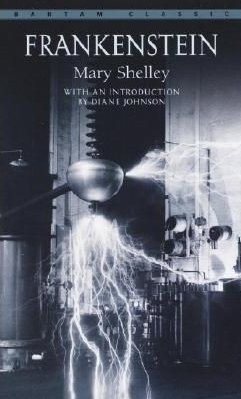Mary Shelley: Frankenstein's Archives
“‘We will each write a ghost story,’ said Lord Byron, and his proposition was acceded to.” —from Mary Shelley's 1831 "Author's Introduction," thirteen years after the first publication of Frankenstein
“I thought and pondered—vainly. I felt that blank incapability of invention which is the greatest misery of authorship, when dull Nothing replies to our anxious invocations.” —from Mary Shelley's 1831 "Author's Introduction"
Origin: The Search for an Idea
In 1831, thirteen years after Frankenstein was first published, Mary Wollstonecraft Shelley agreed to her publishers’ request to write an introduction that would provide “some account of the origin of the story,” as she puts it. There she recounts how a wet and cold summer vacation prompted the task for each guest to come up with a ghost story. The days went by, other guests shared their stories, but Shelley was at a loss.
Part of the issue—this “blank incapability of invention”—was that Shelley wanted not just a story, but a good story. And as ghost stories go, a good story meant a terrifying story. Shelley’s 1831 personal account of how she arrived at the story of Frankenstein, together with the 1816 draft manuscript, provide a glimpse into how Shelley labored towards her own monster.
Invention: The Combination of Ideas
“Invention, it must be humbly admitted, does not consist in creating out of void, but out of chaos; the materials must, in the first place, be afforded: it can give form to dark, shapeless substances but cannot bring into being the substance itself.” —from Mary Shelley's 1831 "Author's Introduction"
Mary Shelley’s open mind in the waking world impacted the visions that came to her in the dreaming world. After a night filled with conversation about galvanism and other scientific experiments, Shelley found herself dreaming about a creature being brought to life at the hands of man:
When I placed my head on my pillow I did not sleep, nor could I be said to think. My imagination, unbidden, possessed and guided me, gifting the successive images that arose in my mind with a vividness far beyond the usual bounds of reverie.
The next morning she began writing her story: “It was on a dreary night of November…”
Process: The Writing of Ideas
Shelley’s original story—the one she would have recounted to her fellow guests—is lost to time. Earlier drafts that predate 1816 have also been lost. However, two notebooks that contain the draft of the novel, and an additional set of notebooks that contain the fair copy for publishing do still exist. They are held at the Bodleian Library at the University of Oxford and have been made available through the Shelley-Godwin Archive online.
The 1816 draft was recorded in two notebooks (Notebooks A and B as they are referred to in the Archives). Shelley originally composed the story as a two-volume piece. The novel as we know it today reads through as a single story composed of 24 chapters, and includes the opening series of letters that frame the story—something that was not present in the original draft of the story. For a very detailed chronology of Shelley’s writing process, see Charles E. Robinson’s “Frankenstein Chronology.”
Additional Resources
The Shelley-Godwin Archives includes not only the manuscripts for Frankenstein, but also the papers from this very literate family: the digitized manuscripts of Percy Bysshe Shelley, Mary Wollstonecraft Shelley, William Godwin, and Mary Wollstonecraft are all part of the digital archive.
When choosing a copy of Frankenstein, be sure it includes Mary Shelley’s 1831 “Author’s Introduction.”
*Frontispiece
Shelley, M. "Frankenstein, MS. Abinger C. 56", in The Shelley-Godwin Archive, MS. Abinger c. 56, 4r. Retrieved from http://shelleygodwinarchive.org/sc/oxford/ms_abinger/c56/#/p11






